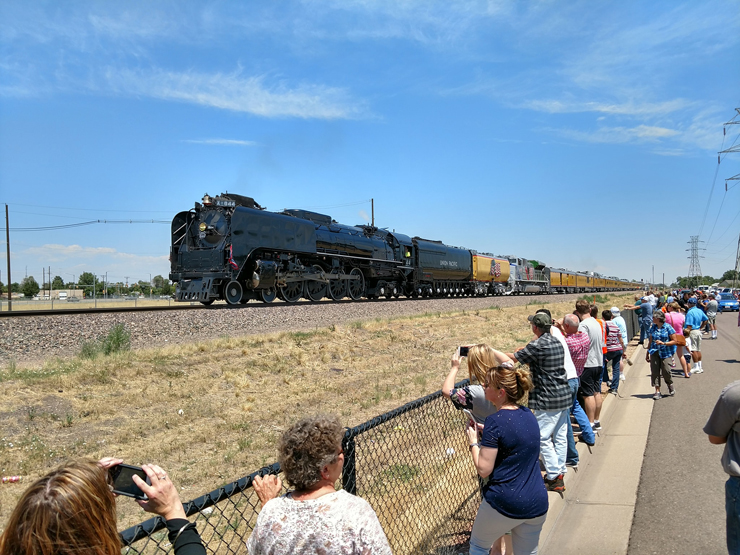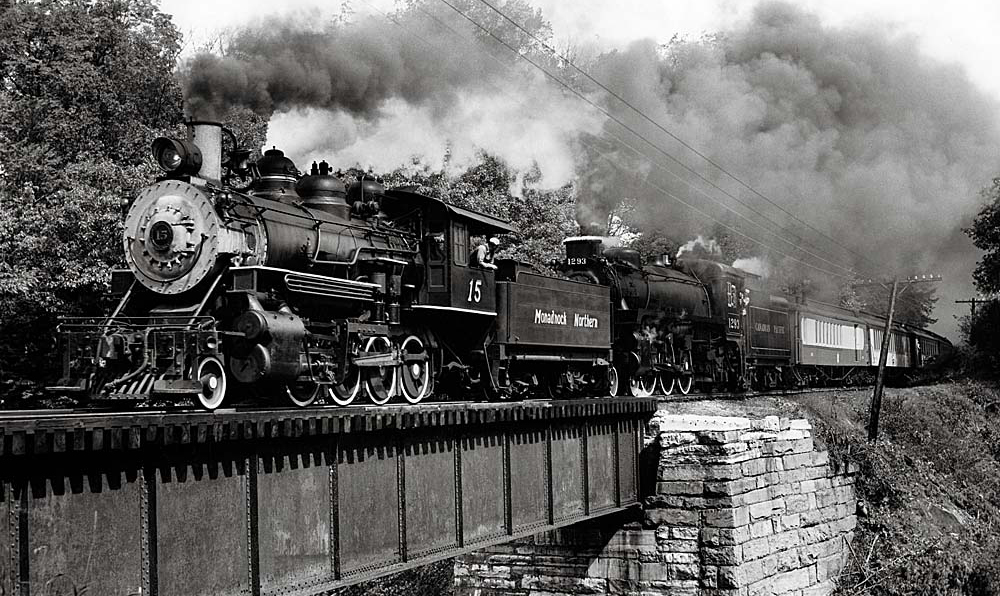The best-selling Fairbanks-Morse diesel locomotives came from the builder’s “H” series of hood units.
Even though Fairbanks-Morse built relatively few diesels compared to EMD or Alco, FM locomotives have a solid following among railfans. They were known for being rugged, excellent-pulling locomotives, in spite of their temperamental opposed-piston engines.
Fairbanks-Morse chose to develop and build its own line of locomotives, starting with switchers at its Beloit, Wis., plant in 1944. Cab units and road switchers followed. Switchers proved to be the most successful locomotives in the FM line — they were regarded as tough, good-pulling locomotives. The OP engine proved problematic in many road freight applications (especially high-horsepower designs), due to its large cooling and oil needs, excessive wear in lower pistons, and the inaccessibility of the lower crankshaft.
The company’s switchers were distinctive, characterized by their tall (cab-roof-height) hoods, necessitated by the tall OP engine, and smooth, semi-streamlined styling (by industrial designer Raymond Loewy). The model numbers use an H (for “hood”), followed by the first two numerals of the horsepower rating, then the number of powered axles and total axles.
Fairbanks-Morse diesel locomotives have a distinctive appearance. All FM road switchers had high noses, with the long-hood end usually designated as the front. As with switchers, the first letter indicates “H” for “hood,” followed by horsepower, number of powered axles, and total axles.
Road switchers ranged from 1,500 hp up to the big 2,400-hp H24-66, dubbed the Train Master. It was the highest-horsepower road locomotive on the market by far when first built in 1953, and it remains a favorite among railfans.
H12-44: 338 units (best-selling of Fairbanks-Morse diesel locomotives)
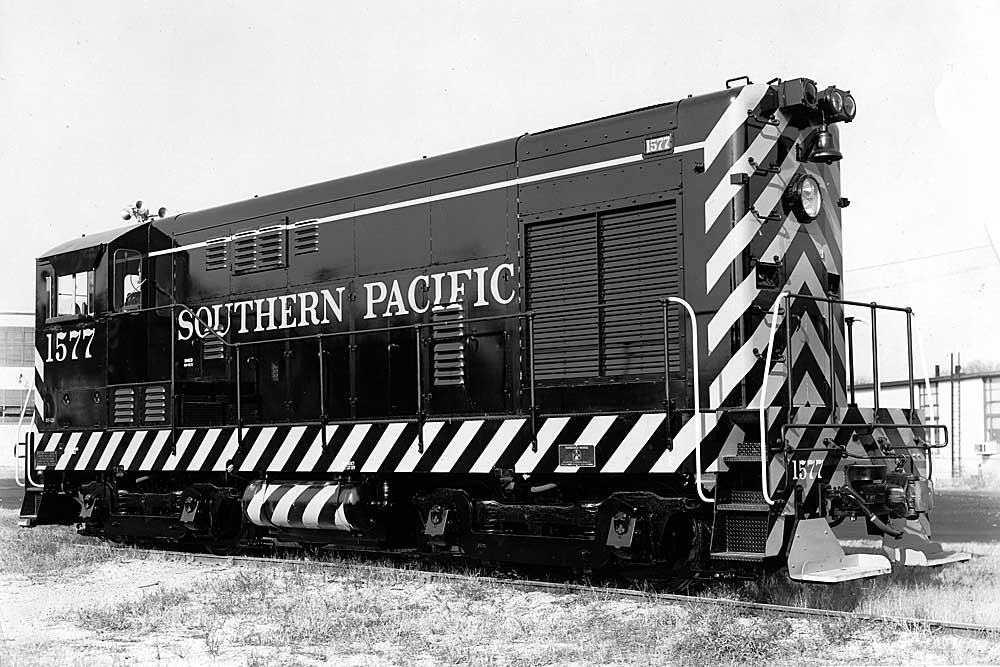
The H12-44 used the same six-cylinder OP engine as the H10-44, but boosted horsepower to 1,200. Early H12-44s had the same body as the H10-44. The body styling was simplified in September 1952, with the rear cab overhang and nose slant eliminated. Another change came in 1956, as the frame and body were shortened by three feet and the sideframe became deeper. The H12-44 was FM’s most-popular diesel locomotive, with more than 330 built.
Major H12-44 buyers: AT&SF, B&O, CN, C&NW, CG, MILW, MW, NYC, NKP, PRR, SLSF, SOO, SP, U.S. Army, U.S. Steel, WAB
H16-44: 299 units (best-selling of Fairbanks-Morse diesel locomotive road switchers)
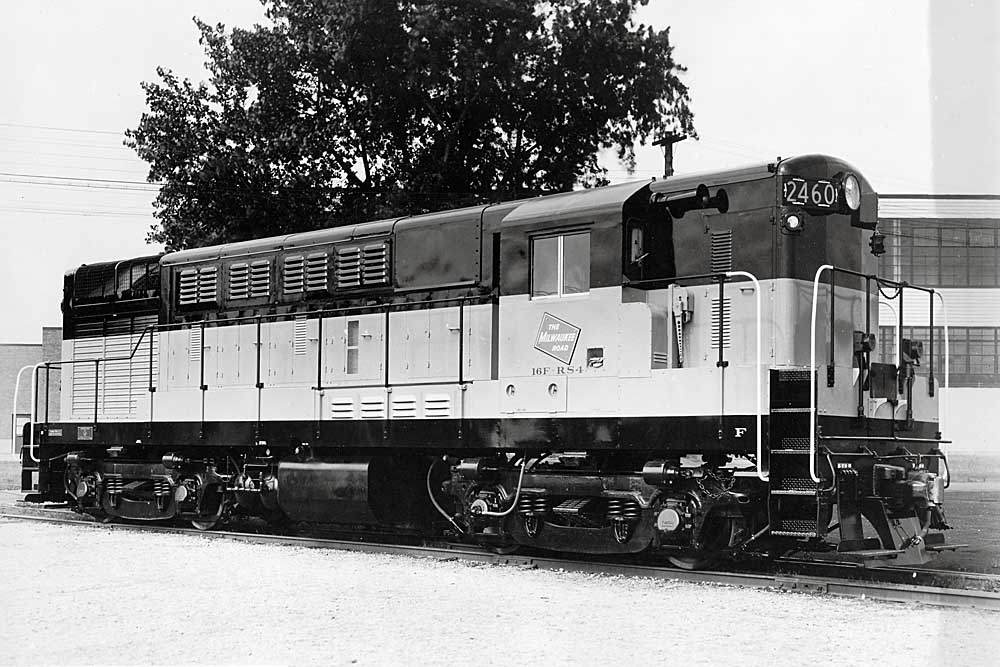
The H16-44 represented a bump in horsepower to 1,600 from the H15-44. At first the difference was strictly internal, as the first H16-44s were visually identical to the H15 (and also used the same eight-cylinder OP engine). In January 1954 the sloped hood ends became vertical and the rounded cab windows were eliminated. The headlight casting was simplified from the initial oval housing. In June 1954 the walkways were elevated, with a step down at the radiator. The screen-covered radiator fans were placed at an angle, becoming visible from the side. After March 1955 the walkway step was eliminated, with high-level running boards along the entire side and an elevated radiator intake at walkway level. Most H16s built after 1950 have the C-Liner truck, spotted by its curved-bottom drop equalizer. This replaced the AAR type B trucks used earlier. Most had handrails on stanchions along the outside of the running boards, but some had handrails mounted on the sides of the hood. The H16-44 was by far FM’s most-popular road locomotive, with 299 built. Virginian and Canadian Pacific were the biggest owners, each with 40.
Major H16-44 buyers: AC&Y, AT&SF, B&O, CN, CP, DL&W, LIRR, MILW, MKT, NYC, NYNH&H, P&WV, SOU, UP, VGN
H10-44: 195 units
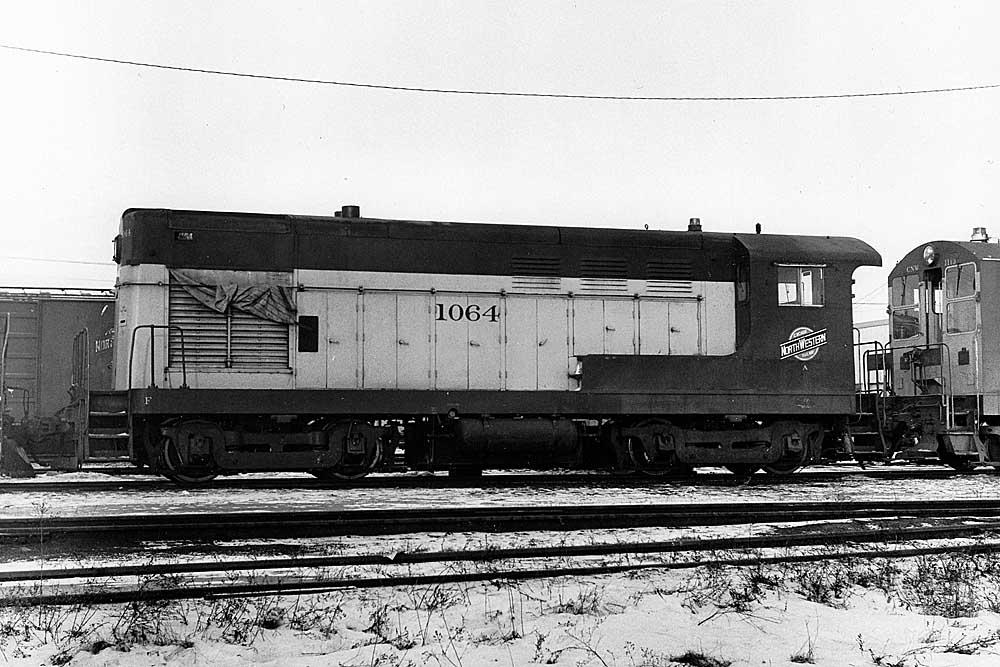
The H10-44, designed by Raymond Loewy, was FM’s first production locomotive. It has graceful lines, a distinctive overhang behind the cab, a slightly slanted nose, and radiator grilles on the front of each side. The 1,000-hp locomotive used a six-cylinder OP engine. The tall profile of the engine dictated the tall (cab-roof-height) hoods of FM switchers and road switchers. All rode on AAR type A switcher trucks. Many were later upgraded to 1,200 hp.
Major H10-44 buyers: AT&SF, B&O, C&NW, D&RGW, MILW, NYC, NKP, PRR, P&LE, SLSF, UP, WAB
H24-66: 127 units
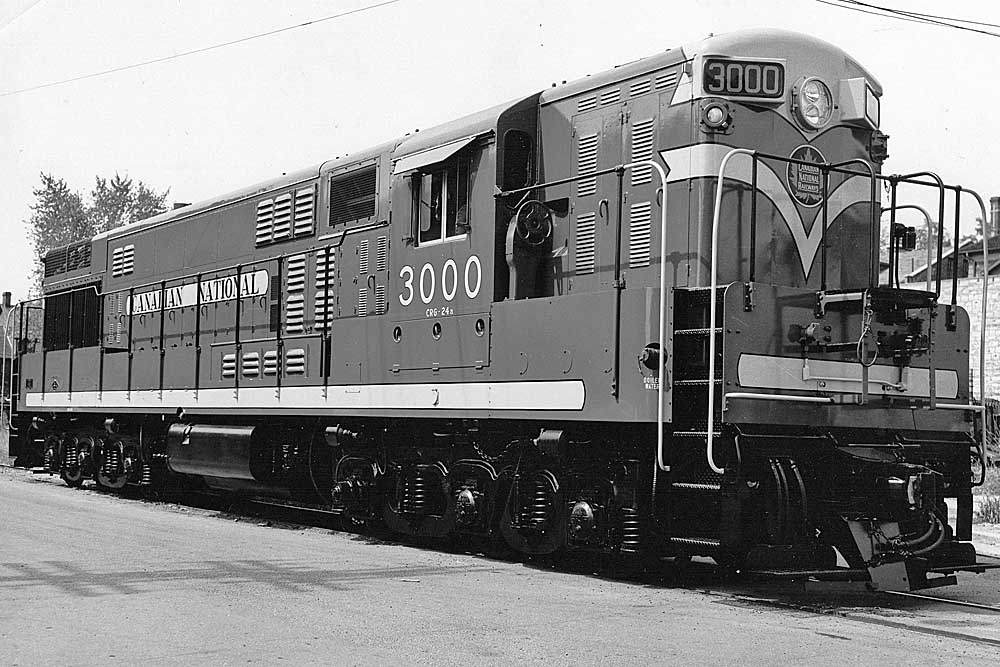
Fairbanks-Morse’s most-powerful — and most-celebrated — road switcher, the H24-66 Train Master, can be identified by its sheer size. It has elevated running boards, tri-mount trucks, and a pair of angled radiator fans visible on each side through screen at the end of the long hood. The fans were initially separated by a narrow panel, but were placed together starting in 1955. The Train Master was rated at 2,400 hp, two years before Alco matched it with the RSD-7 and five years before EMD’s SD24 hit the market. The first few TMs built had straight handrails; they were later modified to have a slight “dip” in the middle to match the walkway height. In 1955 the louver location and spacing were changed, with fewer louver sets along the tops of the sides. Southern and Wabash engines had low end platforms. The Train Master used a 12-cylinder OP engine, and although it was noted for its pulling power and quick acceleration, its performance suffered and problems arose when called upon for constant full-throttle operation or when running at high temperatures, high altitudes, and in tunnels. These locomotives had their best success on the Southern Pacific in Bay-area commuter service, where they served through the mid-1970s.
Major H24-66 buyers: CN, CP, CNJ, DL&W, PRR, RDG, SOU, SP, VGN, WAB





